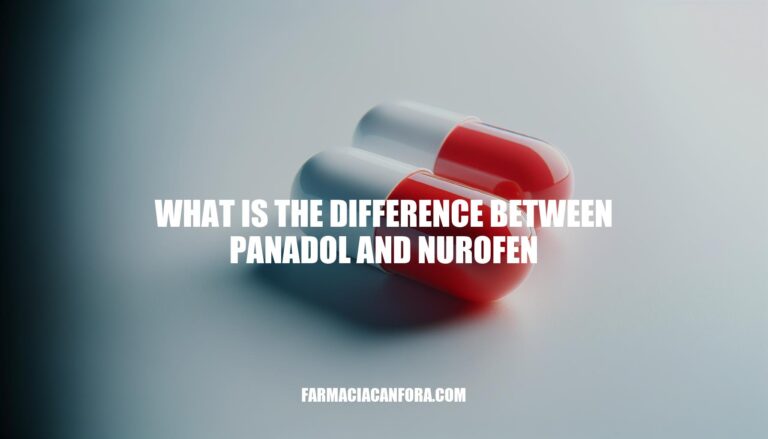


Panadol and Nurofen are popular over-the-counter pain relievers. Panadol contains paracetamol, which is effective for reducing pain and fever. Nurofen, on the other hand, contains ibuprofen, a non-steroidal anti-inflammatory drug (NSAID) that not only alleviates pain and fever but also reduces inflammation.
What is the difference between Panadol and Nurofen? The primary difference lies in their active ingredients and their effects: Panadol is generally used for overall pain relief and fever reduction, while Nurofen is more effective for treating inflammation-related pain.
Panadol contains paracetamol as its active ingredient. Paracetamol is primarily used to relieve mild to moderate pain and reduce fever. It works by inhibiting the production of prostaglandins in the brain, which helps to reduce pain and fever.
Nurofen, on the other hand, contains ibuprofen as its active ingredient. Ibuprofen is a non-steroidal anti-inflammatory drug (NSAID) that not only relieves pain and reduces fever but also reduces inflammation. It works by inhibiting the enzymes (COX-1 and COX-2) involved in the production of prostaglandins at the site of injury or inflammation.
The key difference between Panadol and Nurofen is that Panadol (paracetamol) does not reduce inflammation, while Nurofen (ibuprofen) does. This makes Nurofen more suitable for conditions involving inflammation, such as muscle aches or arthritis, whereas Panadol is often preferred for general pain relief and fever reduction.
What is the difference between Panadol and Nurofen?
Panadol contains paracetamol, which works mainly in the brain to reduce pain and fever by inhibiting the production of prostaglandins, chemicals that cause pain and inflammation. It is effective for general pain relief and fever reduction.
Nurofen, on the other hand, contains ibuprofen, a non-steroidal anti-inflammatory drug (NSAID). It works by blocking the enzymes (COX-1 and COX-2) that produce prostaglandins at the site of pain or inflammation. This makes Nurofen particularly effective for reducing inflammation and localized pain.
Panadol (Paracetamol):
Nurofen (Ibuprofen):
Key Difference: Panadol is primarily for pain relief and fever reduction, while Nurofen also addresses inflammation.
Panadol (Paracetamol) and Nurofen (Ibuprofen) are both commonly used for pain relief, but they have different active ingredients and mechanisms of action.
Panadol and Nurofen are two popular over-the-counter pain relievers with different active ingredients and mechanisms of action. The primary difference lies in their effects: Panadol is generally used for overall pain relief and fever reduction, while Nurofen is more effective for treating inflammation-related pain.
Panadol contains paracetamol, which works mainly in the brain to reduce pain and fever by inhibiting prostaglandin production, whereas Nurofen contains ibuprofen, a non-steroidal anti-inflammatory drug (NSAID) that targets the site of pain or inflammation in the body.
In short, what is the difference between Panadol and Nurofen? The main differences are their active ingredients, mechanisms of action, and effects on inflammation.